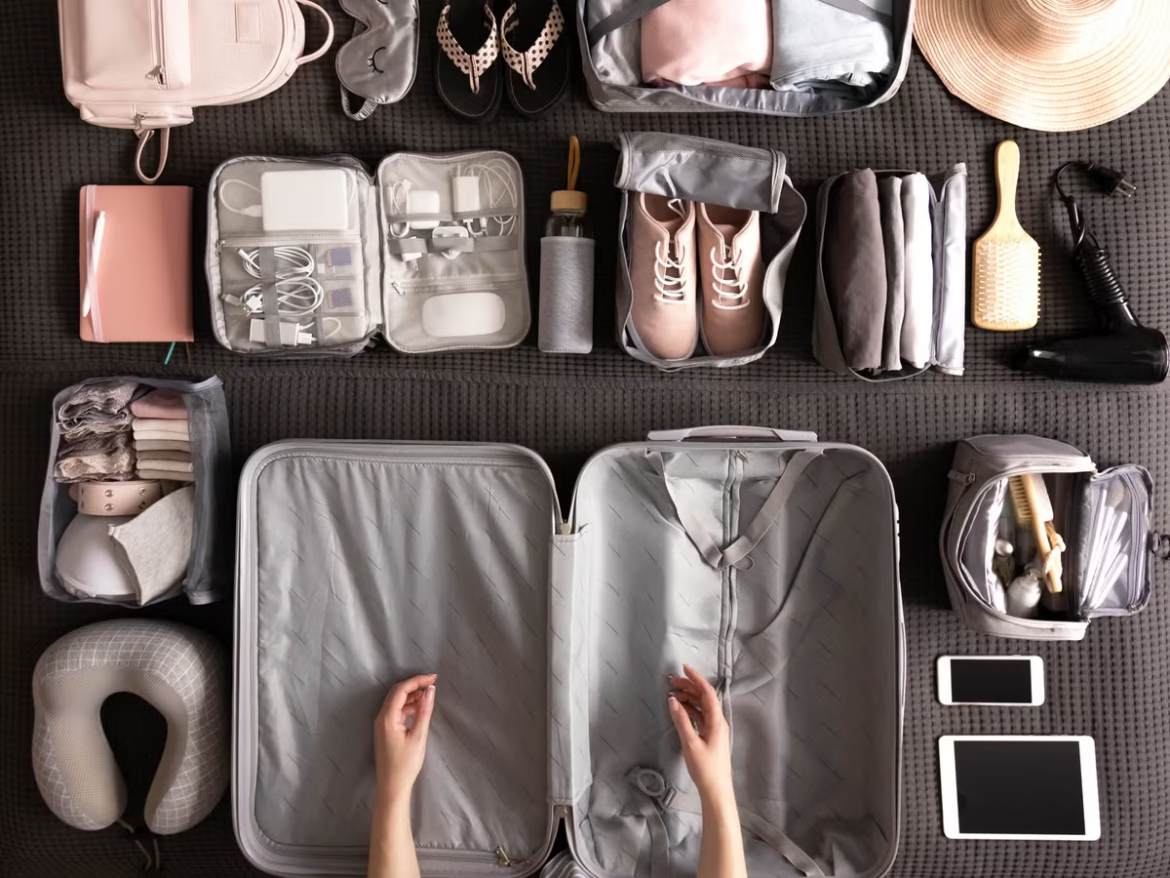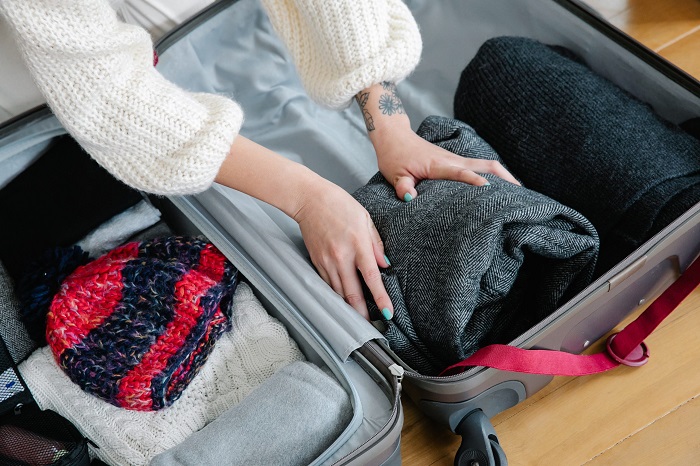Introduction
Traveling solo is one of the most empowering and enriching experiences one can have. Whether you’re heading to a bustling city, a remote mountain village, or a tropical beach, your adventure starts with how well you pack. When you’re on your own, there’s no one else to share luggage, borrow essentials from, or help carry extra weight. That’s why knowing exactly what to pack for solo travel can make or break your trip.
This comprehensive guide covers every item you need to ensure a smooth, safe, and enjoyable journey. We’ll go over clothes, tech, safety gear, documents, health essentials, and even mindset tools that make solo travel more efficient and worry-free.
What to Pack for Solo Travel: The Essentials
Travel Documents & ID
Make digital and physical copies of all important documents. Keep one set in your backpack and another in your hotel/hostel.
Must-Haves:
-
Passport (with valid visa if needed)
-
National ID
-
Travel insurance documents
-
Flight/train/bus tickets
-
Hotel reservations
-
Copies of your travel itinerary
-
Emergency contact list (printed and digital)
Clothing: Light, Versatile, Layered
When planning what to pack for solo travel, versatility should be your top priority. You want clothes that mix and match easily.
Pack These:
-
3–4 breathable t-shirts
-
1–2 dressier tops for evenings
-
2–3 pairs of pants (jeans, travel pants, or leggings)
-
1–2 pairs of shorts
-
1 lightweight jacket
-
1 raincoat or compact poncho
-
5–7 pairs of underwear and socks
-
1 pair of sandals and 1 pair of walking shoes
-
Sleepwear
-
A scarf or buff (multi-purpose accessory)
Pack according to your destination’s climate and cultural norms.
Toiletries and Personal Care
Solo travelers should aim for compact, leak-proof, and TSA-compliant items. You’ll often be carrying your own bag everywhere.
Toiletry Kit:
-
Travel-sized shampoo, conditioner, and body wash
-
Toothbrush, toothpaste, and floss
-
Deodorant
-
Razor and shaving cream
-
Nail clippers
-
Hairbrush or comb
-
Sunscreen
-
Lip balm with SPF
-
Hand sanitizer and antibacterial wipes
-
Travel towel
-
Menstrual products (if applicable)
-
Small mirror
-
Laundry detergent sheets or bar (for sink washing)
First Aid & Medications
Knowing what to pack for solo travel includes preparing for health emergencies. Pack a simple first aid kit you can access anytime.
Items to Include:
-
Pain relievers (ibuprofen, paracetamol)
-
Band-aids
-
Antiseptic cream
-
Antihistamines
-
Motion sickness tablets
-
Insect repellent
-
Prescription medications
-
Water purification tablets (for remote areas)
-
Electrolyte sachets
-
Digital thermometer
Tech Gear for Solo Travel
Tech makes solo travel safer and more connected. But it’s important not to overpack. Choose only the essentials.
Don’t Leave Without:
-
Smartphone (with eSIM or unlocked for local SIMs)
-
Charging cables
-
Power bank (10,000 mAh or higher)
-
Universal adapter
-
Travel plug converters
-
Lightweight laptop or tablet (optional)
-
Noise-canceling earbuds
-
Kindle or e-reader
-
Portable Wi-Fi device (if traveling in multiple countries)
-
Flashlight or headlamp
Safety Items
When traveling alone, you’re your own security detail. Knowing what to pack for solo travel means taking safety seriously.
Safety Essentials:
-
Doorstop alarm
-
Whistle
-
RFID-blocking wallet or pouch
-
Money belt or neck wallet
-
Padlock (for hostel lockers or luggage)
-
Copies of IDs hidden in your bag
-
Pepper spray (if allowed in destination)
-
Tracking devices (like Apple AirTag)
Daypack or Backpack
Choose a secure, anti-theft backpack with hidden zippers and RFID-blocking pockets.
Tips:
-
Pack your day bag with essentials you need throughout the day: water, snacks, map, documents, cash
-
Make sure it’s light and comfortable for long walks or hikes
Packing Tips for Solo Travelers
Roll, Don’t Fold
Rolling your clothes instead of folding them saves space and reduces wrinkles.
Use Packing Cubes
Organize your items by category—clothing, toiletries, electronics—so you never dig through your entire bag.
Carry a Digital and Physical List
Check off items as you pack to make sure you don’t miss anything. Keep a copy on your phone for reference.
Don’t Overpack
You’ll be carrying your own bag 90% of the time. Remember: you can buy most items abroad if needed.
Be Destination Smart
Research local customs, dress codes, and weather. Packing smart saves money, respects culture, and keeps you comfortable.
What Not to Pack for Solo Travel
You may think you need a lot, but the reality is: less is more. Here’s what to avoid:
-
Excessive shoes
-
Full-size toiletries
-
Expensive jewelry
-
Heavy books (use e-readers instead)
-
Fancy clothing you’ll likely never wear
-
Too much tech gear
Travel Apps to Download Before You Go
Tech goes hand in hand with knowing what to pack for solo travel. These apps help navigate, stay safe, and manage your itinerary.
-
Google Maps (offline maps)
-
WhatsApp (communication)
-
Hostelworld / Booking.com
-
Google Translate
-
XE Currency
-
Rome2Rio or Omio (transport options)
-
Trail Wallet (expense tracking)
-
Uber or local ride-share apps
-
Safety apps like Noonlight or bSafe
Frequently Asked Questions (FAQs)
Q1. How do I decide what to pack for solo travel?
Start by researching your destination’s climate, culture, and activities. Then make a checklist of essentials including clothes, documents, first aid, and safety items. Use packing cubes to organize.
Q2. What size bag should I carry for solo travel?
A 40- to 50-liter backpack is ideal for most solo travelers. It’s cabin-friendly, lightweight, and easy to carry. For shorter trips, a 30-liter bag might suffice.
Q3. Should I bring a laptop on solo trips?
Only if you need it for work or extended travel. Otherwise, a smartphone or tablet is enough. Remember, traveling light is key.
Q4. What’s one thing solo travelers often forget to pack?
A compact first-aid kit and digital backups of important documents are often overlooked but crucial when traveling solo.
Q5. Is it better to use a suitcase or backpack for solo travel?
Backpacks are usually better for solo travel, especially if you’re moving frequently or using public transport. Suitcases are fine for city-based travel with minimal movement.
Q6. How can I keep my belongings safe when I’m alone?
Use anti-theft bags, hide backup cash and documents, lock up valuables in hostel lockers, and always carry copies of IDs and travel insurance.
Q7. How do I avoid overpacking when traveling solo?
Lay everything out first. Then remove items that serve only one purpose or duplicate others. Stick to the essentials and remember—you can wash clothes during your trip.
Conclusion
Solo travel is liberating, but it comes with responsibilities. You’re in charge of your safety, comfort, and flexibility. That’s why knowing what to pack for solo travel is so important—it determines your freedom on the road.
With the right gear, you’ll be ready for anything: a sudden downpour, a spontaneous hike, or an overnight bus ride. Follow this guide to ensure your solo trip is organized, safe, and stress-free.
Smart packing isn’t about carrying more—it’s about being prepared with less. Choose wisely, travel light, and embrace the journey ahead.

